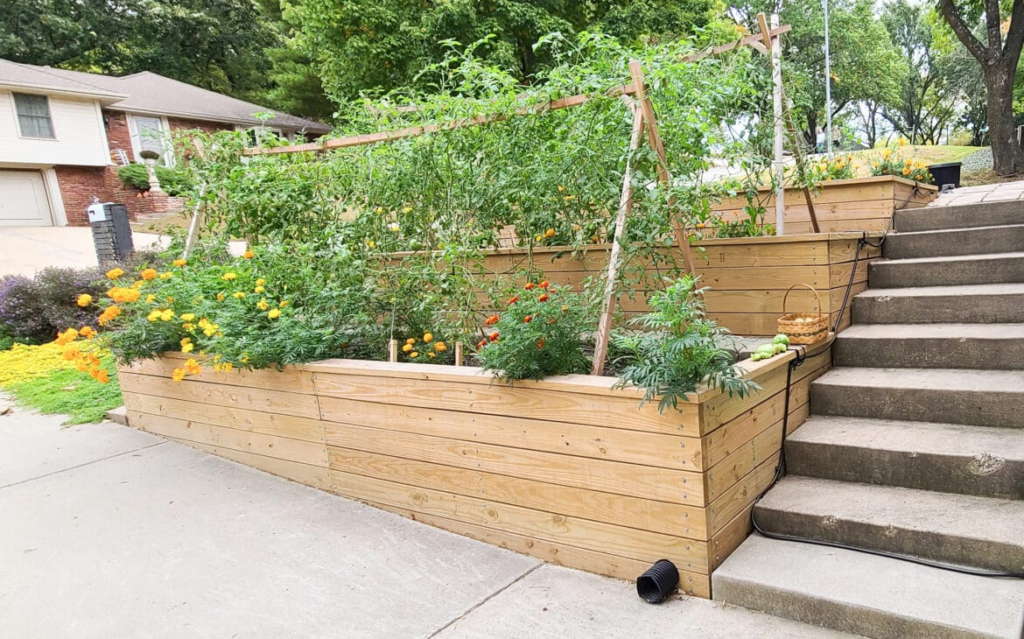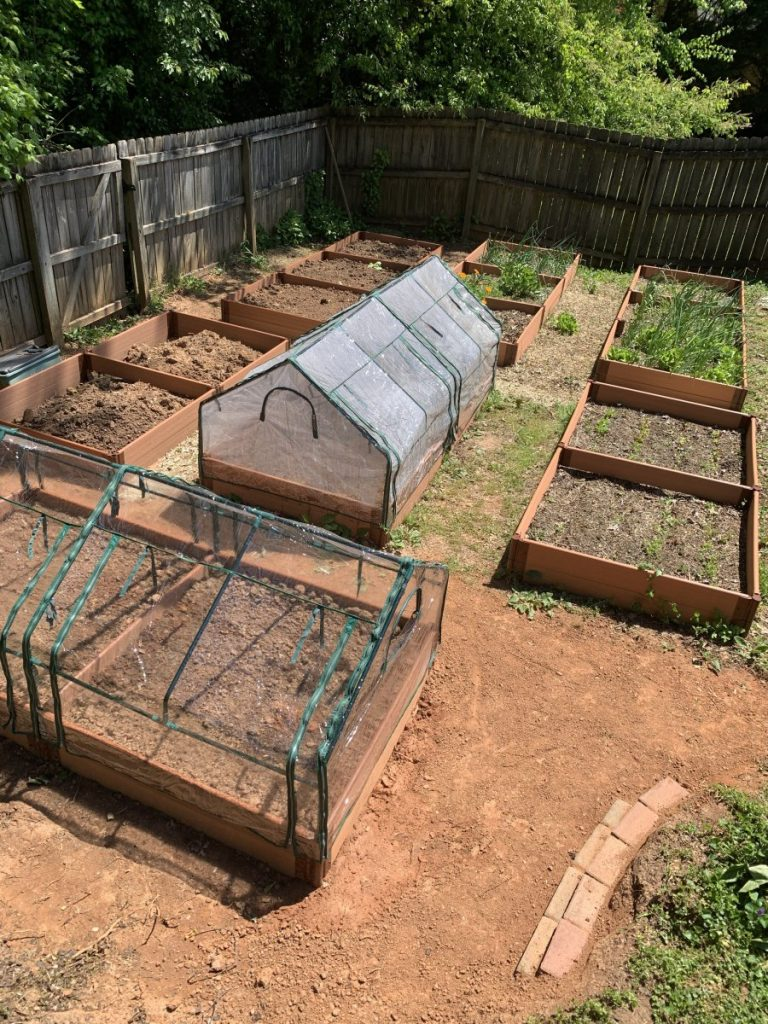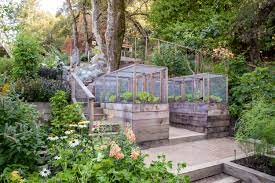By Barbara Pleasant, 5 July 2018
If your ideal space for growing vegetables and herbs happens to be a sloping hillside, don’t worry—creating a terraced garden can turn that challenging terrain into a beautiful, productive, and manageable space. With over a decade of experience gardening on a slope, I’ve learned valuable lessons that can help you make the most of your hillside garden.
Planning a Terraced Vegetable Garden
When designing your terraced garden, keep in mind that water naturally flows downhill. Therefore, the best approach is to stabilize the slope by creating reinforced beds that run across it. This design ensures that you can easily plant, maintain, and harvest your crops.
Start by sketching a side view of your slope. Using a measuring tape, assess the elevation gain (rise) and the horizontal distance (run) of the slope. With this information, you can experiment with different bed designs and materials. For very steep slopes, you may need stacked beds to form steps, which should be maintained from the sides. For moderate slopes, create shallower, tiered beds with pathways between them for easier access. The key is to design your garden so you have stable, level places to work.

The Importance of Measuring
Accurate measurements are essential when creating a hillside garden. Understanding the slope’s rise and run helps determine the type of beds that will work best. Keep in mind that maintaining a terraced garden involves physical effort, as you’ll need to walk up and down the slope to tend to your plants. While it can feel like a workout, this activity is worth it, and many gardeners find it improves their physical health over time.
Creating Raised Beds on a Slope
A terraced vegetable garden essentially involves constructing raised beds on a slope. Begin at the bottom of the hill and work your way upward. Depending on your site, you may only need a small stone wall, or you may need to build multiple compact beds stacked like boxes.
To reinforce your beds, use iron rebar stakes, which are far more durable than wood stakes since they don’t rot over time. Various materials can be used to create the bed frames or walls, including natural stone, retaining wall blocks, concrete blocks, and untreated wood.

- Natural Stone: If you live in a mountainous area, stone can be a cost-effective material. Stacking the stone wall slightly backward into the slope will ensure it remains stable and requires minimal maintenance each season.
- Retaining Wall Blocks: These are easy to work with and uniform in size, making construction straightforward. No extra reinforcement is needed for blocks under 18 inches high.
- Concrete Blocks: A more budget-friendly option, though heavy and labor-intensive to work with.
- Logs and Untreated Boards: These materials are prone to decay, but as they break down, they provide beneficial nutrients to the soil through a process similar to hugelkultur—a gardening method that benefits from decaying organic matter.
Steel panels and plastic lumber are also popular materials for terraced gardens because they are durable and long-lasting. Just be sure to avoid treated lumber that could leach chemicals into the soil.
Maintaining Your Terraced Vegetable Garden
As your garden matures, the structure of your terraced beds will be hidden by the lush plants that grow, creating a multi-layered effect. Drainage is rarely a problem, though some soil movement may occur with rainwater. Over time, organic matter from the higher beds will naturally move downhill, enriching the lower tiers. This phenomenon, along with adding organic matter to the upper beds, can help boost soil fertility throughout the entire garden.
Gardening on a slope presents unique challenges, but with thoughtful planning and the right materials, your hillside garden can thrive and become a beautiful, sustainable space.
